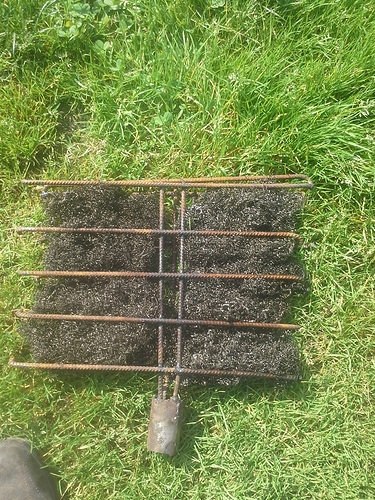I guess the second one is sorted out.
The first one, just guessing but, by the way it’s postioned it might be some kind of flap directing air flow in the intake depending on vacuum/flow. Maybe rescuing from stalling when low rpm/vacuum? I guess vacuum line comes from down stream throttle, right?
Sorry, lot’s of guessing here 
Correct, its connected to the intake manifold. The interasting thing is thugh it apears to do nothing to the prm when l played with it. The question is does this effect DOW.
Its quete an exotic car that Chevy… took me a long time to determin whats what and l still dont get a lot of the system.
Good Morning
Your first device is an RPM&Load; long to short pathways intake runner switching over valve.
Gets achomyned as IRCx. (Intake Runner Control x)
Short intake passages best for pressure wave pulsations ramming of air at high RPM.
Longer runner paths matching the pulsation waves for low RPM, best torque usages.
Malfunctions would give poor running power at either low, high RPM; or both.
System adds in a movable plate into each intake runner. Sounds like a soots catcher on woodgas.
Yes your second control is an Exhaust Gasses Recirculation control.
On four cylinder engines it is possible to exhaust pressure pulses control these. MANY different electro/mechanical/vacuum control systems have been used.
Usually anymore full electrical controlled from the engine computer gives better programmable control.
EGR is for reducing nitrous oxides making in the engine combustion chamber under high pressure and high temperature conditions.
The acidic exhaust gasses will corrode and cause the control valves to stick open, or shut.
ANY EGR flow at idle will kill the idle quality!
NO exhaust flows metered into the combustion at accelerations and high lugging loads will cause pinging and combustion knocking when on gasoline fuels with the newer restored high compression engines.
So you will need as long as you are gasoline duel fueling.
Plus in the US/Canada post 1996; and some point in Japan/Korea/EU the computer controlled systems on these will do control circuit function checks at every key-on starting up. AND do forced responses systems functioning checks continuously when the engine is running.
Just unplugging or flow blocking will be detected and set a yellow/red dash light. Set an internal computer stored fault code.
US/Canada post ~2003 detected emissions systems non-functioning will eventually cause the EFI computer to take away cylinders firing and auto transmission gears to force you to STOP driving.
S.U.
Steve, thank you so much for that info. As always, you make sence.
So the intake air path control shuldnt be a problem with woodgas.
The EGR doesent show any malfunction lights when unpluged, but l wuld just put a plate between the valve body and the holes, blocking gasflow. Althugh looks like this will be hard to do. I was afrayd you will show problems with running on gasoline.
Looks like time for some more testing
Kristijan!
If I understand Steve right, I’m afraid that’s what he’s saying:
In other words: Keep the EGR the way it is.
Watched your driving video again. I’m really impressed by your setup. How tall is your gasifier from lid to dump? When I built mine I didn’t know where it would end up. Your setup makes me want to try a low compact bild to fit in the trunk of a sedan.
Hi JO,
Yes, looks like mechanical bricking the EGR is not a option. The only option wuld be to put a swich of some kind, but in case l forget to plug it in while driveing on dino l wuldnt like to ruin the engine whit pinging and other nasty things. So looks like lll stick with your advice, althugh extra 5-15% engine working volume is tempting…
Thanks for the thumb up but the truth is, althugh l made it as compact as l culd at the time l was building it, now l see lots of potential inprovements. Afterall, this is a experimental settup.
If l wuld build again, l wuld make some modifications to the firetube, mostly reduceing the weight and puting it lower (to gain hopper space). I wuld allso make the whole settup (firetube, hopper, cyclone, hot filter, air preheat) in one compact houseing.
Now to anwser your question, if l remember correctly, the whole gasifier is about 55cm tall.
Ha most of you guys will laugh when l tell you the hopper is only 24 cm high, 7,5". It holds fuel for about 40km (25 miles) and lm quite pleased with that. Althugh thats with a bulky fuel, the good stuff is still drying.
I like the idea of a gasifier in a trunk of a sedan. I think that wuld be a next step in makeing wood gas hidden in privacy. Do you have a vehicle already? Be sure to keep us posted!
No, nothing like that. I have no sedan (yet) but watching your video made me think of the possibility.
Would it be possible to get a hand drawn sketch or something showing the lay out and major dimensions. Every since I built my I have complained about having to drive a 5000 LB. truck around. Would much prefer a little “sports car” type. TomC PS. You, JO, Don, and maybe others are proving that a small vehicle with a small gaifier is still capable or “road speeds”.
Tom,
There is s skech on post 75. The dimensions are in mm.
The only difference now is l changed the air preheat and closed the secondairy air jets. I started useing bigger wood chunks so the oxy zone was to small for secondairy air jets. In case l decide to swich to chips lll put them back.
Based on what you told us about your wood shortige problems l think you will not regret buying a smaller engine. When JO stated his rabbit eats 15kg/100km of wood, first l thod he was jokeing or something. I have read and saw a lot of wood gas material, and was expecting the number ti be more in the neighberhood of 25-30kg/100km. But thain l started to DOW and culdnt belive it my self.
Two 5 gallon buckets of chunks get me 100km (65miles), l think thats a good deal.
Numbers confirmed. I think Don also saw about the same in the WK version of his Tracker.
Just think about it: 15kg/100 km. Thats only twice the weight of what you would expect from gasoline consumption.
If I remember right Wayne ones stated theoreticly 16 pounds of wood equals a gallon of gasoline. That’s about what we experience, meaning we’re not waisting much. WIP (wood is power)
Tom, you check out the numbers and do the conversions! I know you think we europeans are spoiled, only having to learn to count to ten 
Internet is up and running! Here is the promissed hot filter report:
First l made a cage for the sack
then the sack. Stiched with its own fibres.
the finished filter cell
This is the hot filter houseing. Gas enters on top, goes trugh the filter and exits on the bottom. The bottom hole is conical to insure tight fit to the cage.You can allso see the brass air intake non return valve next to the cyclone.
This is the filter after about 200 miles.Just a thin layr of soot on it, still nowhere near problematic. Legend says they shuld be self cleaning, we will see about that but eaven as such, l think there is more thain 1000 miles between cleanouts.
The cooler is clean so looks like its doeing its job well. If the cloth will last l think this was a good move to do. I strongly recomend hot filters!
Kristijan,
You are a genius! Not afraid to try new things! Keep up the innovation! 
You are correct again about your easy system. I spent some time last night trying to get a feel for the dimensions of Krist’s gasifer Thankfully he mentioned the dimensions were in mm. ( had to figure out that that was not candy first) The conversion table asked what I am converting from and to, and had he not said mm, I would have chased my tail around determining if I was working with cm, mm, dm. Now I have to go and determine Kg, l, and Km. Why didn’t we convert to metrics back in the 60’s when we said we would. Instead we converted transmission to metrics, chassis and most engine to what ever you call what we do. All it meant was I had to buy a new set of Snap-on tools to cover all sizes of nuts and bolts. TomC
Actually it was a manufacturing stroke of genius as now every mechanic had to buy a second set of tools, taps dies and inventory of nuts and bolts
And then the consumer gets to pay a premium while the mechanic sorts through the pile for the right stuff!
Only 30 miles from here lives a guy who made a hot filter for his Mercedes back in the 80s. This is his setup.
http://www.gengas.nu/byggbeskrivningar/dukrenare/index.shtml
Next link is pics of his car. The hot filter is a laying propane tank with nipples to remove for blowing the filter clean with compressed air. He claims he normally doesn’t need to. Only running with very moist wood will make soot stick to the fabric. The gas is so clean he uses a standard car radiator for gas cooler. It’s mounted in front of the stock one.
http://www.gengas.nu/bilder/gengaskalle.shtml
Kristijan,
Making yours square is clever. You need much less space.
I remember Johnathan making a hot filter before his trip around Sweden. It looked a lot like the one you have pictured except I believe the material was placed over a metal coil. TomC
Mike,
Thank you but there is no real inovation here. Just my own way to make old tehnology work. The truth is none wuld be possible without you guys…
JO, l realy like his settup! A great ride! My next might look similar. Althugh lll try not to cut the trunk cover.
But now l have a more unplesant topic l wuld like a opinion on…
Yesterday was the first frosty night. I was in night shift so l had to start the car in frosty temps. I culd hardly start it on petrol and when it finaly caught life it was as if it ran just on 3 cyl and wuldnt hold a idle. When it warmed up it ran well again but when l wanted to go to work it was the same story again. Whats goeing on?
Allso l have been seeing idle rpm falling over the two weeks l last set it. It was at 1100 rpm at the time but now its below 500. The idle is fixed with a screw.
I was thinking one option is the injectors dont like woodgas, or perhaps the air filter gets moist from offgas when l stop the engine, blocking airflow. Any thods?
Many of the drive on wood conversions have add- on air filters away from the woodgas/air mixed flow.
My post got removed except for the edit…
What I said before was: remove the air filter for a test, probably not ignition because you made no changes to that, I would look for a bad or dirty airflow sensor or air temperature sensor and check for moisture in the fuel tank or a fuel filter. I would not expect those last two to be a problem until it gets much colder. I am just making educated guesses here!
I agree with Mike on the paper filter, remove it and see if the problem clears up first, carbon soot and moisture on a paper filter will block air flow, especially if it becomes frozen.
Bob




